Learn about the unique properties of sunflower honey, its health benefits, rich history, and how to identify pure,...
Worker bee pheromones: role and function
Introduction
Honeybees are social creatures that need cooperation to survive. They do this by using the secretions of their glands.
Glands of honey bees are divided into two categories: specialized glands and non-specific glands. Specialized glands are present only in one of the two female castes, queen or worker. For example, tregal glands are found only in queens and produce a substance that stimulates ovulation. Nasonov's glands are present only in workers and produce a substance that attracts other bees.
Nonspecific glands are present in both queen and worker, but their secretion is caste It depends on the specifics. For example, wax glands are present in both castes, but they develop earlier and are more active in workers.
Gland plasticity in honeybees is related to two caste-determining processes. . The first process leads to a difference between queens and workers. This process is influenced by genes and environmental factors such as nutrition. The second process leads to differentiation between workers. This process is influenced by the needs of the colony.
Gland development in workers follows a temporal pattern related to activities related to gland secretion. For example, wax glands and hypopharyngeal glands (with secretions associated with construction and feeding activities) develop earlier and are more active in young bees, while sting alarm pheromone production is low in young bees and increases as workers become guard bees.
In general, the secretions of honey bees' glands play an important role in the functioning of the colony. They help bees to communicate with each other, identify the queen, guard the nest, and find food (Katzau-Guzanski et al. 2002).
Pheromone regulation of worker reproduction
Honey bees are social creatures that live in colonies. In each colony, there is a queen who lays eggs and workers who perform different tasks.
Mandibular glands of honey bees produce two types of pheromones: the pseudo-queen pheromone and the alarm pheromone. .
Pseudoqueen pheromone
Pseudoqueen pheromone is a chemical compound produced by workers and queens. This pheromone causes workers to show more aggressive behavior and their ovaries to grow.
Ovaries of workers are normally small and do not produce eggs. However, in situations where the queen dies or does not lay eggs, workers can be laid. In this situation, the production of pseudo-queen pheromone in workers increases.
Warning pheromone
Warning pheromone is a chemical compound ( Heptanone) produced by workers. This pheromone makes other bees aware of the danger.
When a bee encounters a threat, it produces a warning pheromone. This pheromone causes other bees to attack that threat. Smell acts on the body of bees. These receptors send signals to the bee's brain that change the bee's behavior and physiology.
Pheromones of the mandibular gland play an important role in regulating worker reproduction. These pheromones cause the workers to show more aggressive behavior and their ovaries to grow. Also, these pheromones make other bees aware of the danger. >

< h4>Effect of ethyl oleate in regulation of honey bee worker activity
The activity of honey bee workers is regulated by various factors including the queen, the bees themselves and their surrounding environment. One of the most important factors regulating worker activity is the pheromone ethyl oleate.
Ethyl oleate is a chemical compound produced by adult foraging bees. This substance is found in a high concentration in the body of grazing bees and is produced through the conversion of ethanol obtained from fermented nectar. This substance was discovered by Keonsini et al. (2004).
Research has shown that ethyl oleate delays the onset of grazing activity in young workers. This is because ethyl oleate acts as an inhibitor and prevents the growth and development of young workers. have, their secretion prevents the growth of young bees that can devote themselves to nesting jobs. When forager bees age or die, deterrence fails and young bees begin to forage (Castillo et al. 2012; Munz et al. 2012).
In addition This, ethyl oleate has also been found in the pheromone composition of queens and broods. This suggests that ethyl oleate plays an important role in regulating bee colony activity (Keeling and Slessor, 2005; Slessor et al., 2005). >
Nasonov's gland pheromones are one of the most important pheromones of honey bees that play a role in the orientation and attraction of bees.
Nasonov's gland is a small gland in The back of the bees' body produces a secretion containing seven volatile compounds. These compounds include geraniol, nerolic acid, geranic acid, (E)-citral, (Z)-citral, (EE)-farnesol and nerol.become This gland consists of a mass of cells that are located under the intersegmental membrane, between the sixth and seventh tergites (the dorsal scales of the bee) (Kasir and Lenski 1994).
Pheromones Nasonov's gland plays an important role in the orientation of bees. When returning to the hive, bees find their way by following the trail of Nasonov's gland pheromones secreted by other bees around the hive entrance.
Nasonov's gland pheromones also help attract Bees contribute to food sources. When worker bees find a new food source, they secrete Nasonov gland pheromones on it to attract other bees to that source.
Furthermore, Nasonov gland pheromones help attract bees They also play a role in each other. Bees use Nasonov gland pheromones to form hive clusters and perform other social activities.
Here are some general functions of Nasonov secretions in honey bees: style="list-style-type: circle;">
- Orientation of bees when returning to the hive
- Attracting bees to food sources
- Attracting bees to each other
- Formation of hive brood clusters
- Bee population control
Bee workers by bending the tip of their abdomen downwards and releasing the secretion of Nasonov's gland, a pheromone Nasonov is secreted and dispersed. This behavior is also performed by young workers on their first orientation flights. Nasunoff pheromone release is particularly evident after colony disturbance and can be triggered by nest odors such as comb, honey, pollen, propolis, and QMP (Ferguson and Frey, 1981; Monroe et al., 2003; Cohen et al., 2011).
Recent studies have revealed a possible new role for nasonov pheromone in the hive: bee workers use nasonov pheromone to select young larvae for queen rearing. New queens expose their nasonov's glands to attract other workers to the selected larval cell. In a pilot experiment with queenless workers, cells in which more pheromone was released had a greater chance of becoming queen cups, confirming the involvement of Nasunov pheromone in the recruitment of workers for queen rearing (Elkehtani and Binfield, 2012; Munro et al. et al., 2013).
Furthermore, Nasunov pheromone can be used to communicate between honey bee workers and the queen. The queen uses the nasonov pheromone to attract workers and maintain social order in the colony. Workers also use Nasonov's pheromone to communicate with each other and coordinate their activities.
The role of Nasonov's pheromone in brood swarming
When the brood leaves the hive, the workers begin to They secrete nasonov pheromone. This pheromone is a chemical compound produced by the Nasonov gland at the end of the abdomen of bees. Nasonov pheromone is a strong cohesive agent that attracts bees together.
The first bees to settle in a temporary location expose their Nasonov gland to call the rest of the hive. Put. This will attract other bees to the place and form a group.
Here, a certain number of workers called scout bees are tasked with finding a new suitable place to build a nest. are responsible When a scout bee finds a potential nest site, it communicates the location to other workers by dancing and shaking its body.
After the workers find the new nest site Chosen, a scout bee begins to release the nasonov pheromone around the nest entrance. This pheromone helps other bees to find their way to the entrance of the new nest. p>
[1] The potential of Nasonov's gland components in attracting cluster bees has been shown in behavioral studies. In one study, researchers found that geraniol, (E)-citral, and nerolic acid were the most attractive components of Nasonov's pheromone to cluster bees (Schmidt-Edge, 1994).
In other studies, Researchers succeeded in producing synthetic pheromone compounds that can attract beehives to artificial nest cavities. These compounds can be used to help beekeepers attract brood to suitable locations (Schmidt H, 1999). Other workers tend toward profitable food sources. When a forager finds a new food source, it exposes its Nasonov glands to release the pheromone. This pheromone helps other workers to find and access the food source. >
Various factors affect the release of Nasonov's pheromone. One of these factors is the amount of food reward of the source. If the food source is very profitable, bees are more likely to release the pheromone. Another factor is the amount of food reserves of the colony. If the colony has few food resources, bees are more likely to release the pheromone to attract more workers to gather food.
New study results
New studies show that nasonov pheromone plays a more important role in bee forager recruitment. These studies suggest that nasonov's pheromone can help workers find new food sources, access existing food sources, and decide how to use food resources.
Here is a summary of the results of these studies:
Singh et al. (2022) They found that worker bees prefer to choose food sources that smell more of Nasonov pheromone. This suggests that nasonov pheromone helps workers identify more profitable food sources.
Ma et al. (2021) found that worker bees that secreted more nasonov pheromone were more likely to be attacked by other workers. Be hired to collect food. This suggests that Nasonov's pheromone can help workers gain the trust and respect of other workers.
Chang et al. (2020) found that worker bees exposed to Nasonov's pheromone were more likely to to go to new food sources. This suggests that Nasonov's pheromone can help workers search for new food sources.
Nasonov's pheromone is a powerful communication tool used by honey bees to coordinate foraging behavior. This pheromone helps workers find new food sources, access existing food sources, and decide how to divide food resources among themselves.
Foraging Marking and Recruitment: Tarsal Glands and other pheromones
Secretion of worker tarsal glands
Secretion of worker tarsal glands, also known as worker footprint pheromone, plays an auxiliary role in marking It has a hive entrance and food sources. This secretion is deposited by the landing workers at the hive entrance and possibly on the visited flowers. Worker trail pheromone increases the attractiveness of Nasonov's pheromone (Williams et al., 1981).
Function of worker trail pheromone
The worker footprint pheromone acts as a proximity signal and is active over short distances. This pheromone plays a role in attracting workers to the entrance of the hive and food sources.
Other pheromones related to food search
Tom et al. (2007) found that dancing bees produce and release four cuticular hydrocarbons from their abdomen into the air. These compounds are produced subcutaneously and secreted on the surface of the cuticle. When these compounds are injected into the hive, the number of foragers that leave the hive increases significantly. This suggests that these compounds play a role in worker recruitment. They are known for self-defense, which often involves biting. Defensive behavior is the first out-of-the-nest task performed by workers and therefore begins at an earlier age than foraging. Two different types of workers engage in defensive behavior: guards and defenders. Guard bees are workers who patrol the entrance of the hive looking for potential threats, while the defenders attack as soon as danger is detected.
Warning pheromones
Warning pheromones are chemicals produced by honeybees to warn other members of the colony about danger. They can be released by bees while extruding a stingless stinger, during stinging, and also from the stinger left in the victim.
 In search of health if Are you tired of looking for pure and natural honey
In search of health if Are you tired of looking for pure and natural honey
We are here to consult and supply pure bee products Click All honeys of Iran
Two main groups of substances with warning effect in honey bees have been identified:
The warning pheromones of the bite apparatus, whose main component is isopentyl acetate. This substance is released by bees while extruding the stingless stinger and acts as an early warning signal.
Mandibular gland alarm pheromone, the main component of which is 2-heptanone. . This substance is released by bees during stinging and acts as a secondary warning signal that helps stimulate other bees to attack.
Function of alarm pheromones
Role of alarm pheromones They play an important role in the defensive behavior of honey bees. They help bees to warn each other of potential danger and act as a reinforcer for defensive behavior.
Warning pheromones are important tools for honey bees that help them leave the colony. protect themselves against threats.
Warning pheromones in the sting apparatus
Materials warning pheromones are chemicals produced by honey bees to warn other members of the colony about danger. They are mainly produced by Kushunikov's gland and the glandular regions of the sting sheath in worker bees. The secretions evaporate quickly on the hairs of the setose membrane at the base of the sting bulb.
During defensive behavior, guard bees appear at the entrance of the hive, raise their abdomens, and open the sting chamber. They are exposed to release warning pheromones. At the same time, they inflate their wings and disperse the volatile components. :
- Attract other bees to defend the colony
- Strengthen defensive behavior
- tDelivering intruders
Sting alarm pheromones are composed of various compounds, including isopentyl acetate, 2-heptanone, and aliphatic aldehydes. These compounds have warning effects independently and in combination with each other.
The warning pheromones of the stinger play an important role in the defensive behavior of honey bees. They help bees to warn each other of potential danger and act as a reinforcing agent for defensive behavior.
More than 40 combinations of bee stinger warning pheromones. Honey
Honey bee stinger warning pheromones are chemicals produced by bees to warn other colony members of danger. They are composed of various compounds, including isopentyl acetate, 2-heptanone, and aliphatic aldehydes.
Isopentyl acetate (IPA)
Isopentyl acetate (IPA) is the main active ingredient in the alarm pheromone compound and is responsible for most of the sting-releasing activity. This substance is absent in queens and young workers and increases with the age of the worker bee. It peaks when the worker is about 2 to 3 weeks old, just as it begins guarding duties. Then, as it becomes fodder, its amount decreases.
IPA function
IPA as a warning signal The primary function is to attract other bees to the source of danger. It also acts as a potentiating agent for defensive behavior, which helps bees resist intruders.
Other Stinger Alarm Pheromone Compounds
In addition to IPA, more than 30 other pheromone compounds have been identified in the sting apparatus of honey bees. These compounds have warning effects independently and in combination with each other.
Some of these compounds are:
2 -Heptanone: this substance is the main component of the bell pheromone of the mandibular glands, which is released by bees during stinging.
Aliphatic aldehydes: these compounds have repellent effects and can keep intruders away from the hive.
Bee breeds and alarm pheromones
There is evidence that bee breeds that differ in the intensity of defensive behavior can show differences in the amount and show the combination of warning pheromones. Africanized honey bees have higher levels of alarm pheromones, especially IPA, compared to European honey bees. They also have a much stronger defensive response when synthetic pheromones are released at the hive entrance, indicating a lower threshold for the pheromone response.
The role of 2-heptanone
The role of 2-heptanone (2HPT) produced by worker mandibular glands in colony defense is less than that of IPA. This substance acts as a secondary warning signal that attracts other bees to the source of danger. It also acts as a potentiating agent for defensive behavior, but is not as effective as IPA. They play a role in the defensive behavior of these insects. They help bees to warn each other of potential dangers and act as a reinforcing factor for defensive behavior.
Conclusion
In this post, we looked at honey bee worker pheromones. Pheromones are chemicals used by worker bees to communicate with each other and control colony behavior.
There are different types of bee worker pheromones, each of which plays a specific role. Some of these pheromones are used for communication between bees, while others are used to control specific behaviors, such as honey production, pollen collection, and colony defense.
Bee worker pheromones play an important role in colony performance. They help the bees work in harmony and keep the colony healthy.
We hope you liked this post. If you have any questions in this field, the research and development team of Honeyhub will answer you. Please share your opinion with us below this post.
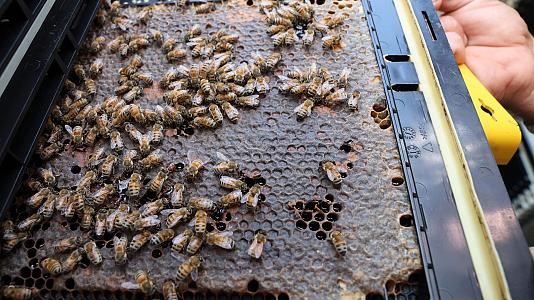
Leave a comment
Log in to post comments








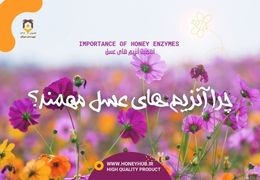
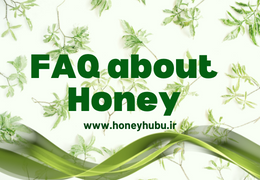

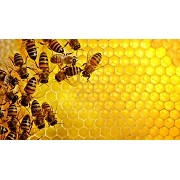


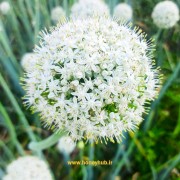

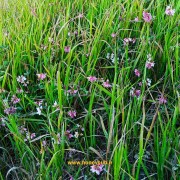




Latest comments